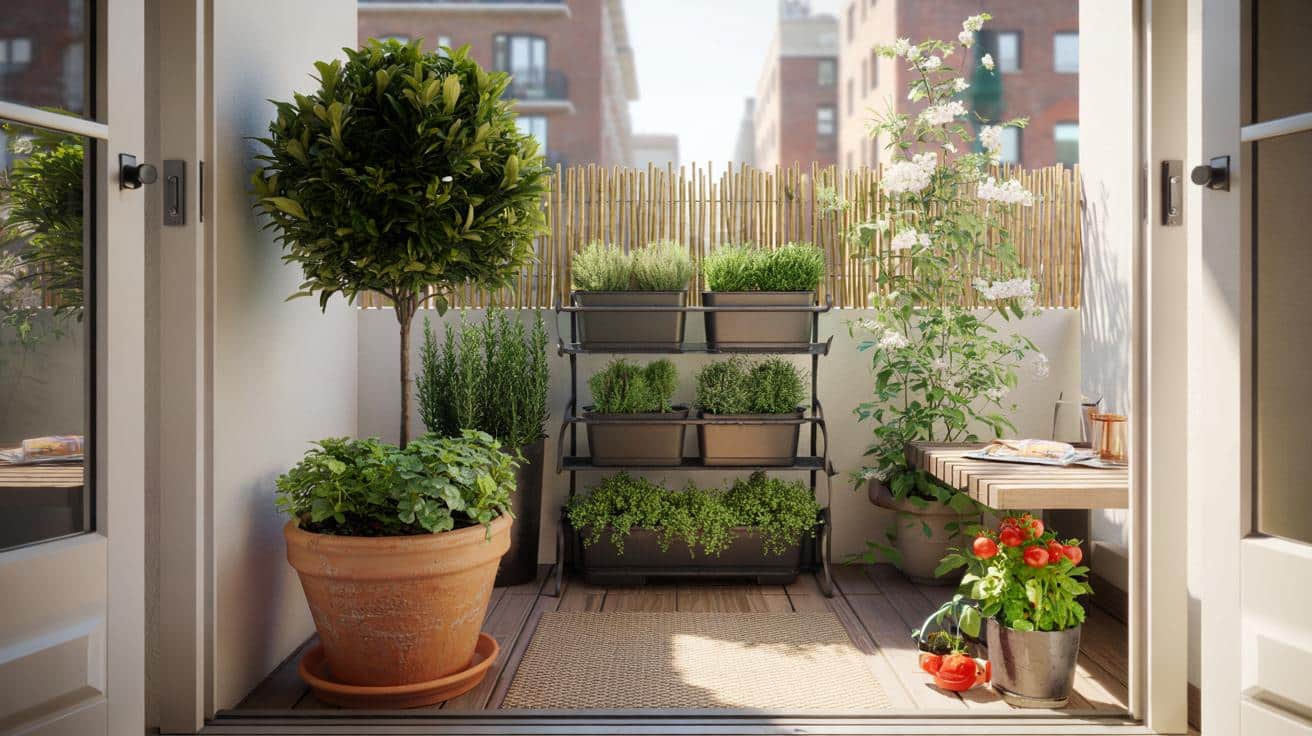On spring mornings the light slides across it for half an hour, then disappears behind neighbouring brick. You stand with a mug, eyeing a tired spider plant and a lonely chair, wondering if this sliver of outdoors could ever feel like a garden. Space is precious. Time, too. Money, not exactly flowing. And yet the urge to green this perch sneaks up every time a neighbour’s geranium flares or the wind smells faintly of cut grass from a distant park. The question isn’t if a tiny space can be beautiful. It’s how to make it sing without fuss, fuss, fuss.
Design small like you mean it
Start with light, not plants. Watch where the sun lands, and when the wind pushes hardest. Scribble a rough sketch of your balcony and ring the bright spots, the dead corners, the view you love and the one you’d rather hide. Think like a theatre designer: one focal point, layers behind it, a simple backdrop. Keep the floor clear where your feet want to be. Embrace a rhythm of repetition—three pots of one plant often beats a jumble of ten.
On a narrow balcony in Bristol, Sofia timed the sun with a kettle timer and learnt she had 90 golden minutes after lunch. She set a slim bench against the wall, stretched a bamboo screen to soften the car park view, and hung three herb planters along the rail at elbow height. It felt like a small holiday at home. She didn’t chase perfection. She picked two colours—deep green and clay—and stuck to them like a dress code.
Small spaces succeed on restraint, not inventory. One large pot can calm three small ones; a single climber can lift the whole scene. Think in planes: floor (textured outdoor rug, timber tiles), midline (pots, a bistro chair), vertical (trellis, railing planters), overhead (a string of warm lights, a hanging fern). If you’re renting, choose fixes that clip, tie or lean. And if the view is a tangle of bins, hide it with a tall planter or reed screen, then draw the eye back to something you love—a lantern, a glossy-leaved camellia, a bird-feeder that winks with movement.
Build up, not out: practical moves that work
Measure width, depth, and the height of your rail, then set a rule: nothing wide enough to block the door, nothing so heavy you can’t nudge it alone. Stack wins: tiered shelves, ladder racks, rail planters. Choose light containers with hidden reservoirs and a peat-free mix that holds moisture without becoming a bog. A capillary mat on a tray will keep roots steady between weekend waters. Water smart, not more. A small watering can with a long spout gives precision, and a saucer under each pot spares the downstairs neighbour.
We’ve all had that moment when a gust flings soil across the balcony and into your tea. Go for squat, heavy-bottomed pots on windy sites, and tether tall stems with soft ties to a slim cane. Don’t overcrowd—plants need air like you need elbow room on a packed Tube. Group by thirst and light needs to cut faff. Let’s be honest: nobody really does that every day.
Start with three reliable winners, then add drama. A glossy evergreen (bay, pittosporum, dwarf laurel) anchors winter. A scented climber (trachelospermum, honeysuckle) frames summer. Edibles like dwarf tomatoes or chillies give you a reason to step outside. Keep it simple and repeat what works.
“Small gardens don’t fail for lack of space. They fail when we ask them to be everything at once.”
- Kit that helps: a folding chair, a 5–7 litre watering can, soft plant ties, a hand fork, and a wipe-clean outdoor rug.
- Fast privacy: reed or bamboo screening and a pair of tall grasses in matching pots.
- Low-fuss colour: pelargoniums, calendula, dwarf dahlias in one tight palette.
- Night magic: a plug-in festoon or solar stake lights at knee height.
- Wind-tough structure: rosemary, thyme, heuchera, and sedum.
Your balcony, your pace
There’s a sweet spot between doing nothing and doing everything. Add one element, live with it a week, then add the next. Notice what you reach for, what you ignore, what makes you smile on a wet Tuesday. If watering is your nemesis, a self-watering trough is the real luxury. If clutter unsettles you, move two things out before bringing one in. Small spaces reward consistency over scale. A fortnightly five minutes—deadheading, a quick sweep, a sip of tea while you check leaves—beats a heroic Sunday once a month. The beauty sneaks up not when you’re finished, but when the space starts talking back: a bee on thyme, the scratch of bamboo in light wind, the cool of stone under bare feet.
| Point clé | Détail | Intérêt pour le lecteur |
|---|---|---|
| Map the light and wind | Observe sun hours, shade pockets, and gusty corners before buying plants | Fewer mistakes, plants that actually thrive |
| Layer vertically | Use shelves, trellis, and rail planters to free floor space | More greenery without losing room to move |
| Repeat a tight palette | Two or three colours and a couple of materials (clay, wood, black metal) | A calm, considered look that feels bigger |
FAQ :
- How do I start a garden on a tiny balcony?Spend one week watching light and wind, then pick three plants—an evergreen, a climber, and one seasonal colour—in matching containers.
- What plants cope with wind and partial shade?Heuchera, evergreen ferns, rosemary, thyme, and dwarf bamboo handle breeze and dappled light with minimal fuss.
- How do I water without annoying the flat below?Use saucers, reservoir planters, and a long-spout can; water slowly in the morning so surplus evaporates.
- Can I grow food with almost no space?Yes: cut-and-come-again salad in a trough, dwarf tomatoes in a 10–15 litre pot, and herbs along the rail.
- How can I make the space look bigger?Keep the floor as clear as possible, repeat plants and colours, and draw the eye up with a trellis or hanging planter.








